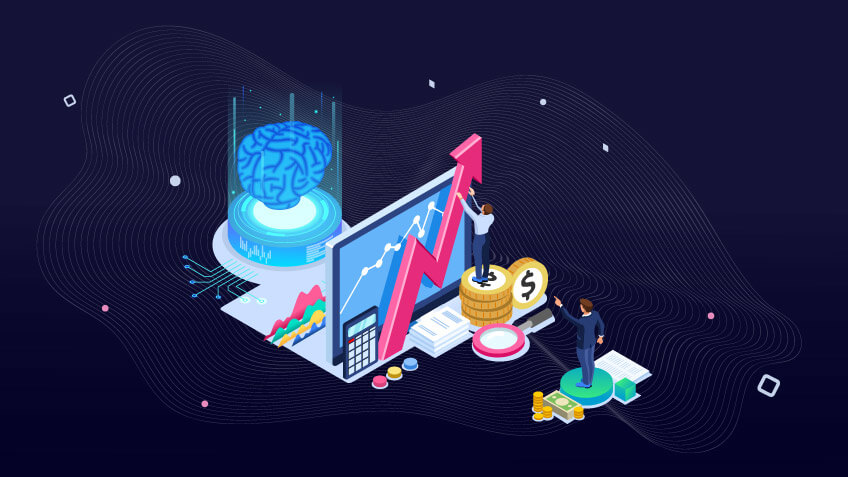
Self-driving cars… Online recommendations for what to binge-watch or buy next… Fraud detection… all of these are made possible through machine learning. Over the past few years, this branch of artificial intelligence (AI) has completely changed what’s possible with technology.
But what exactly is machine learning? Although many of us use it each and every day, numerous people still can’t answer this question. This post is designed to give you a brief overview of this disruptive technology and how it works.
What Is Machine Learning?
As we’ve mentioned, machine learning is a subset of AI. So, what’s AI? Well, AI’s actually a subset of computer science! It specifically deals with creating computer systems that can perform tasks as well as or better than human beings.

Machine learning takes things a step further. As its name implies, it focuses on teaching machines how to learn. Put another way, it’s a data analysis method that automates analytical model building. By feeding a machine system the right data in the right way, it can learn from this data, identify patterns, and even make decisions without human intervention.
Machine Learning’s Evolution
Machine learning has actually been around for decades. It was born from the idea that computers could learn without being explicitly programmed to perform specific tasks. All the machine would need is some data to train off of and superb pattern recognition capabilities.
The iterative aspect of machine learning cannot be emphasized enough. By training machine learning models over and over (and then some) and exposing them to new data, they’re able to independently adapt. This repetition is what eventually leads to reliable results.
By this point, a certain question is probably bugging you: If machine learning has been around for a quite a while, why has it recently exploded in popularity? Because of the ability to automatically apply complex mathematical calculations to big data rapidly — this is a fairly recent development.

With cheaper and more powerful computing resources than ever before, we’re able to accelerate the repetitive training necessary for machines to become competent in certain tasks. This is why methods similar to machine learning like data mining and Bayesian analysis have also grown in popularity.
Better computing systems and more affordable data storage means machine learning is no longer restricted to tech developers in San Francisco. Now, we can all analyze and act upon bigger, more complex data and deliver faster, more accurate results. In turn, organizations from fields like healthcare, transportation, finance, and more can all leverage machine learning to identify profitable opportunities and address longstanding problems.
How Machine Learning Works
To build the best machine learning systems possible, you have to pair the right algorithms with the right tools and processes. Here are the main factors to consider:
- Data preparation
- Algorithms
- Automation processes
- Scalability
The two most popular types of machine learning methods are supervised learning and unsupervised learning. Let’s briefly cover the ones everyone should know a little bit about:
Supervised Learning
For this method, algorithms are trained with labeled examples, where the desired output is known for an input. Here’s an example: Let’s say you have some testing equipment that has data points labeled with either “F” for “failure” or “R” for “runs.” We then feed this data in the form of inputs and outputs to a learning algorithm. After this, the algorithm compares actual output with correct outputs to elucidate any errors. It then modifies the machine learning model accordingly.
Through a variety of methods (classification, prediction, regression, gradient boosting), supervised learning utilizes patterns to predict label values for any unlabeled data. Therefore, this machine learning method is commonly used in cases where historical data can inform future events, such as anticipating fraudulent credit card transactions.
Unsupervised Learning
For data that has no historical labels, unsupervised learning can be used. In these instances, the system isn’t given a “correct answer” — it must figure things out by exploring the data and identifying underlying structures. Unsupervised learning can be applied to cases of transactional data. For example, it can help group segments of customers together in marketing campaigns by identifying similar attributes among them. Conversely, it can also aid in separating segments of customers.
Popular unsupervised learning techniques include k-means clustering, nearest-neighbor mapping, singular value decomposition, and self-organizing maps.
Semisupervised Learning
Semisupervised learning can be applied to many of the same problems that supervised learning is used for. It’s extremely useful in cases where the cost of labeling data is far too high for a fully labeled training process. In instances like these, both labeled and unlabeled data are used for training. Usually, the data consists mostly of unlabeled data with only a little bit of labeled data included. Classification, regression, and prediction are all methods that can be used with semisupervised learning.
An example of semisupervised learning is the identification of a person’s face on a webcam.
Reinforcement Learning
In reinforcement learning, the machine learning algorithm discovers how to function through trial and error. Essentially, it notes which actions yield the greatest output and adjusts accordingly. Reinforcement learning is often applied in gaming, robotics, and navigation.
You can break reinforcement down into three primary elements: the agent (i.e., the learner), the environment (whatever the agent interacts with), and the actions (what the agent is capable of doing). No matter what the application is, the goal for reinforcement learning is to make the agent better at choosing actions which optimize the results.
Want to Learn More About Machine Learning?
Data is prevalent in every industry. And organizations around the world are starting to realize the immense benefits that machine learning can provide them. By gleaning insights from their information, enterprises and institutions are able to work more efficiently, gain a competitive edge, and disrupt their sectors in unprecedented ways.
We hope you’ve enjoyed this brief overview of machine learning. In case you’d like to learn more about what machine learning can do for you, download our free whitepaper.







